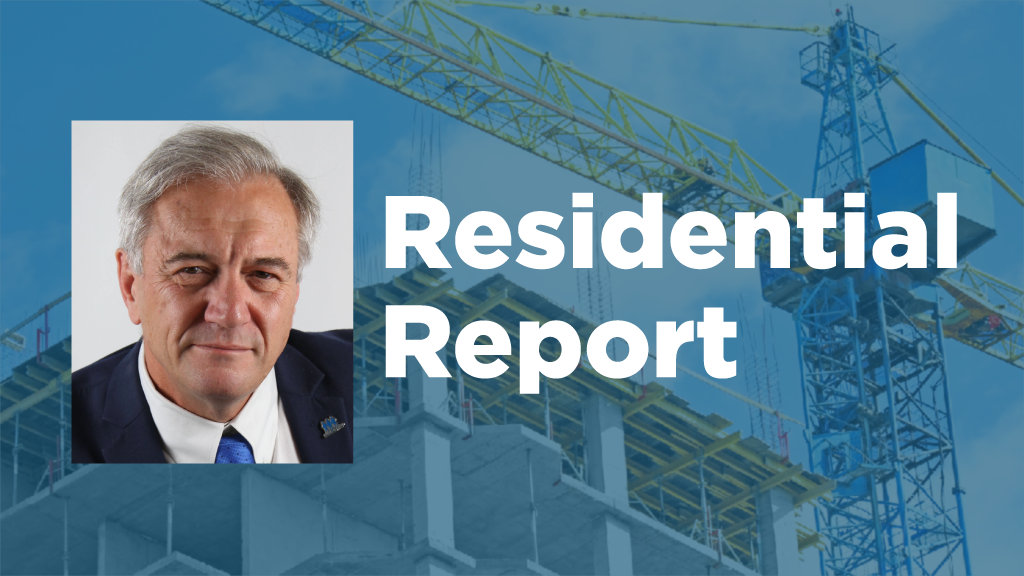Famed theoretical physicist Albert Einstein once quipped, “In the middle of every difficulty lies opportunity.”
Today, the difficulty thrust upon us is a housing supply crisis of prodigious proportions. It is now time to face up to the situation and devise a bold and ambitious plan and turn it into a golden opportunity.
We know what the problem is. We’ve witnessed unprecedented and massive increases in new housing taxes, fees and levies to stratospheric levels. We still have a sputtering bureaucratic morass of red tape and bureaucracy involving all three levels of government. And, rather than embrace digitization, we still rely on antiquated and primitive methods of approving development proposals.
As we begin 2025, with the possibility of both a federal and Ontario election on the horizon, we should hold the feet of politicians to the fire to ensure they bring in policies that will make housing affordable.
The present outlook does not look good.
The condo market has taken a beating, with declining sales, increasing inventory and financial challenges for buyers and investors. Condo developers in Ontario have not been able to build units that people and families can afford due to high taxes and fees. Fewer cranes are now active in the GTA.
Housing starts over the next few years are expected to weaken and the already-dire supply shortage could get even worse, according to a recent industry forecast that was prepared for RESCON.
The downturn in residential construction will last well into this year and be followed by a slow recovery in activity from 2026 to 2028. Employment in the industry will also decline during the period.
The ambitious goal of the provincial government to build at least 1.5 million homes by 2031 would now require 150,000 new homes to be built annually. However, we are not anywhere near that figure.
In 2023, the province reported only 110,584 new homes were started. And that figure included homes and condos, as well as long-term care beds and additional residential units. Latest figures show that the sales of both new homes and condos are languishing at historically low levels in the GTA.
The reason?
To start with, the tax burden on new homes has jumped to a whopping 36 per cent of the purchase price — up substantially from 31 per cent three years ago, a separate report for RESCON revealed, which makes it tough for ordinary working individuals and families to be able to afford to buy a home.
The average home now costs $1,070,000, so consumers are paying $381,000 in income taxes, corporate, sales and transfer taxes, and development charges and fees. The tax and fee burden on new homes is more than twice that of the rest of the economy — due mostly to development charges.
To change the narrative, our governments must tackle these supply-killing measures and speed up the development approvals process.
A recent survey of private-sector homebuilders by StrategyCorp noted that frustrating planning processes and constantly shifting regulations are putting a damper on housing construction. Yet, the authors state, “there are many tools governments can employ to streamline approvals processes and leave the industry with clear long-term goal posts which have little, if any, cost attached to them.”
One idea raised is the concept of a universal planning application which would offer applicants a single planning window through which they would be able to submit one or a series of rolling submissions to cover all their necessary approvals, including official plan, zoning bylaw, site plan and others.
The development industry, the survey stated, is worried about the lack of housing being built and the slow pace of construction and sales, as interest rate cuts will only go so far. It also indicated a shift is needed from all levels of government to a more collaborative attitude to get housing started.
The tax burden on new housing, in my opinion, is stymieing the market.
In the end, fees like development charges are paid by the homebuyer. The excessive charges are causing hardship for new buyers.
Some progress has been made on the tax burden. It appears the politicians are beginning to listen.
The federal Liberals announced the sales tax will be removed on construction of new rental apartment buildings and the Ontario government intends to follow suit. Meanwhile, the federal
Conservatives, who are projected to form the next federal government, have promised to cut the sales taxes on all new housing under $1 million. The Tories have estimated the measure will reduce the cost of an $800,000 home by $40,000, and spur construction of 30,000 more homes per year.
The cities of Burlington and Vaughan have also made waves by lowering their development charges. To tackle the crisis, this type of leadership must be embraced and expanded on by other municipalities.
We are now at an inflection point. In 2025, we have a window to fix the housing supply problem. It is crucial that we do not squander that opportunity.
Richard Lyall is president of the Residential Construction Council of Ontario (RESCON). He has represented the building industry in Ontario since 1991. Contact him at media@rescon.com.








Recent Comments